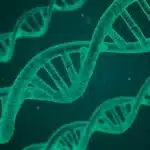Hayabusa, also known as Hayabusa 1 or Hayabusa-MUSES-C, was a Japanese space probe designed to study the asteroid Itokawa. It was launched by the Japan Aerospace Exploration Agency (JAXA) on May 9, 2003, and returned to Earth on June 13, 2010.
Mission Objectives
The primary objective of the Hayabusa mission was to collect samples from the near-Earth asteroid Itokawa and return them to Earth for detailed analysis. It aimed to provide insights into the origin and evolution of asteroids, the early solar system, and the potential for resources on these celestial bodies.
Asteroid Itokawa
Itokawa is a small asteroid, approximately 550 meters long, known as a rubble pile asteroid. It belongs to a group of asteroids called Apollo asteroids, which have orbits that cross Earth’s orbit. Itokawa was chosen as the target for the Hayabusa mission due to its accessibility and scientific importance.
Mission Challenges and Achievements
The Hayabusa mission encountered numerous challenges during its operation. Shortly after its launch, the spacecraft experienced technical difficulties, including a malfunctioning reaction wheel and a fuel leak. However, through innovative engineering solutions and determination, JAXA managed to overcome these obstacles and continue the mission.
Hayabusa made multiple close approaches to Itokawa and successfully collected surface samples using a sample collection device called the “Minerva.” The spacecraft also deployed a small lander called “Minerva” and a target marker to aid in navigation and imaging of the asteroid’s surface.
Return to Earth
After spending several months in close proximity to Itokawa, Hayabusa initiated its journey back to Earth. The mission faced further challenges during the return phase, including a malfunctioning ion engine and the failure of the sample collection system to seal the collected samples.
On June 13, 2010, Hayabusa reentered Earth’s atmosphere and released its sample return capsule, which parachuted down to the Woomera Test Range in Australia. The capsule contained precious samples from the asteroid, which were subsequently retrieved and analyzed by scientists.
Legacy and Scientific Contributions
Despite the technical difficulties encountered during the mission, Hayabusa made significant contributions to the field of planetary science. The returned samples from Itokawa provided valuable insights into the composition, structure, and evolution of asteroids. Scientists were able to study the samples in laboratories and further our understanding of the early solar system.
The success of the Hayabusa mission paved the way for subsequent asteroid exploration missions, including Hayabusa2, which successfully collected samples from the asteroid Ryugu and returned them to Earth in December 2020. Overall, the Hayabusa mission demonstrated the capabilities of Japan’s space exploration program and contributed valuable data to our understanding of asteroids and the formation of our solar system.
Observer Voice is the one stop site for National, International news, Editor’s Choice, Art/culture contents, Quotes and much more. We also cover historical contents. Historical contents includes World History, Indian History, and what happened today. The website also covers Entertainment across the India and World.
Follow Us on Twitter, Instagram, Facebook, & LinkedIn










